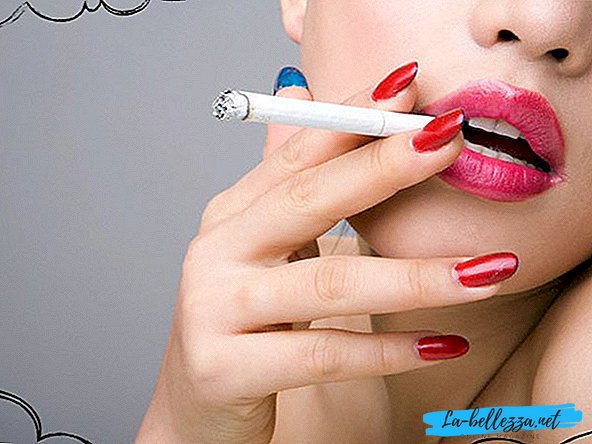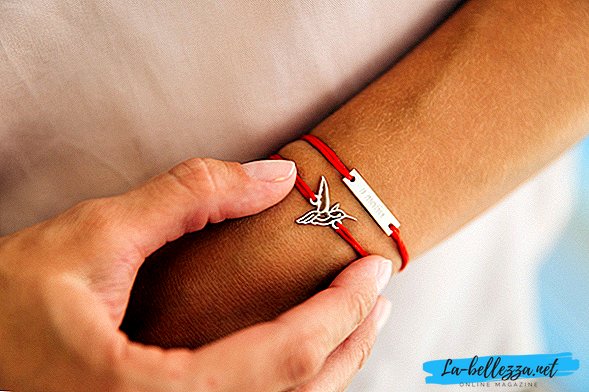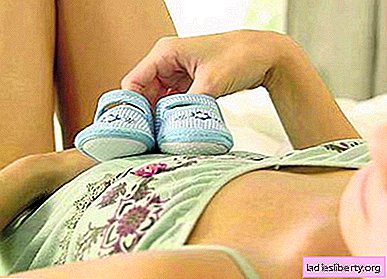
To preserve the beauty and youthfulness of the skin, women mainly use cosmetics, but recently, interest in pharmacy drugs has increased. Retinoic ointment has a powerful anti-inflammatory and dermatoprotective effect, which helps and how to use it correctly, we will consider in detail.
What the instruction says
The main component of the drug is isotretinoin - synthetic analogue of retinol (vitamin A). This substance was previously used to treat cancer, as it can stop the division of cancer cells. Then they discovered another property of isotretinoin - it is able to regulate the functioning of the fatty glands and reduce the growth of epithelium in the excretory ducts.
Consider how retinoic ointment works and what helps for external use:
• restores the skin;
• speeds up regeneration processes;
• improves cellular metabolism;
• acts as an immunomodulator;
• reduces the production of sebum;
• cleans pores.
The main purpose of retinoic ointment is the fight against skin inflammation, it is used to treat acne, black spots, seborrheic dermatitis, rosacea, ichthyosis.
Isotretinoin is used in the fight against age-related aging of the face, age spots and wrinkles. Vitamin A deficiency is known to make the skin dry, flabby and wrinkled. The retinoids that make up the ointment help slow down wilting. They even out skin texture, improve complexion, moisturize the skin. The components of the ointment penetrate deep into the lower layers of the dermis and act at the level of the stem cells of the dermis. They help develop your own collagen, provide cell renewal.
Retinoic ointment is produced in a concentration of 0.1% and 0.05%. It is yellowish in color, not sticky, and is well absorbed by the skin. In addition to isotretinoin, it contains:
• Butyloxyanisole - an antioxidant;
• Glycerin and petroleum jelly - substances that additionally soften and moisturize the dermis;
• Ethyl alcohol is an antiseptic component;
• Wax - it acts as an emulsifier, provides hydrophilicity and is responsible for the texture of the ointment.
From blackheads and comedones
A pharmaceutical preparation can be used in the fight not only with youthful eels, but also in sakna already in adulthood. Acne retinoic ointment helps even in advanced cases when there are subcutaneous nodules and papular-pustular rashes. It is used in the presence of acne and inflammation in the body.
Consider how retinoic ointment for acne works:
1. The thickness of the epidermis decreases. When applied to the skin, the ointment has a slight irritating effect, as a result of which the cells of the surface layers of the skin are desquamated and fall away. There is a peeling effect. As a result, the pores open, sebum ceases to accumulate in them.
2. Dissolves sebaceous plugsthat clog pores. This property of retinoic ointment is used in the fight against comedones.
3. Reduces the activity of fatty glandsdue to which the elimination of acne. After all, the main reason for their formation is an excess of sebum clogging the excretory ducts.
When using retinoids, allergic reactions are possible, therefore, a skin test should first be performed. A small amount of ointment is applied to the elbow. If, after 30 minutes, itching elements, redness, urticaria appeared in this place, you can not use the remedy.
Rules for using retinoic acne ointment
The product is applied only to cleaned and dried skin, it is not recommended to use a scrub for these purposes. In the presence of severe acne, the agent is used in a concentration of 0.1%. As the inflammatory elements on the skin decrease, they switch to a low concentration.
Apply the ointment pointwise to problem areas 2 times a day until completely absorbed, no need to rub. Course treatment should not last more than 12 weeks, in any case, prior consultation with a dermatologist is required.
The most commonly used scheme is:
• 1-2 weeks - 0.1% ointment twice a day;
• 3 weeks - 0.05% concentration of 2 r / day;
• 3 weeks - the drug is used 1 r / day;
• 4 weeks - apply every other day.
Judging by the reviews of dermatological patients, a sharp improvement in appearance does not occur. On the contrary, a week after the start of treatment, peeling, redness appears, exacerbation of acne. This is due to the fact that dead cells are removed from the surface of the epidermis, the activity of the sebaceous glands decreases. To reduce these manifestations, you can use compresses with decoctions of herbs.
Since retinoids are quite active on the skin, it is recommended to use only mild moisturizing cosmetics during the treatment period. Which do not cause irritation. It can be baby milk or cream from a pharmacy. In addition, other acne preparations can not be applied to the face.
After 2 weeks, the condition improves: acne passes, the skin looks clean and radiant. Some comedones disappear on their own, the rest pass after mechanical removal.
Consider why retinoic ointment does not help. The tool is ineffective in the presence of subcutaneous scars, severe keratinization, furunculosis.
Wrinkle Retinoic Ointment
The anti-aging properties of the ointment were not immediately found. After acne treatment, a wonderful transformation took place: not only acne and black spots disappeared, but also shallow wrinkles. The skin was smoothed, acquired tone and elasticity. This has given rise to the use of retinoic ointment for wrinkles. Its results in the rejuvenation process depend on the following:
• Isotretinoin acts as a chemical peeling. After use, the upper dead cells are removed, the thickness of the stratum corneum decreases.
• Isotretinoin acts on keratinocytes - the lowest cells of the epidermis. They begin to divide intensely, skin is renewed. The resulting young cells attract water molecules, thereby increasing the moisture content of the dermis.
• Stimulating the production of our own connective tissue. As a result, the skin gains elasticity.
Rules for the use of retinoic ointment for wrinkles:
• An analogue of vitamin A is applied to clean skin, preferably in the evening.
• Distribute in a thin layer, paying attention to problem areas - where wrinkles are more noticeable.
• Do not apply under the eyes and the area around the nose and mouth.
• Leave the ointment until completely absorbed; after 20 minutes, the excess is removed with a napkin.
• After the end of the exposure time, the face is washed with water, a moisturizer is applied.
• Anti-aging treatments last 2-4 weeks.
Beauticians advise using the ointment in the offseason - in the fall and spring, when there is no large solar insolation. Retinoids increase the sensitivity of the skin to ultraviolet radiation, therefore, age spots may appear. For the same reason, you can not take sun baths and visit the solarium during the procedure. Before going out, you need to apply sunscreen.
Retinoic ointment for rejuvenation can be used from 30 years, when the first signs of wilting appear. So in the case of acne, there is no need to wait for an instant effect. A single use of a pharmacy product will not give an impressive result, but course application improves the condition of the dermis. The skin tone is leveled, it is cleansed and looks fresh.
Special instructions
Since the main component of the drug is an analogue of vitamin A, during the treatment period, you need to stop taking vitamin complexes. Otherwise, signs of hypervitaminosis may appear: dry skin, inflammation of the red border of the lips, conjunctivitis.
Retinoids irritate the mucous membranes of the eyes in an irritating manner, so it is not recommended to apply the ointment to the eyelids. During the treatment period, contact lenses should be discarded.
Contraindications
The tool can not be used for diseases of the liver and kidneys, pathology of the pancreas, cardiovascular system.
Other methods should be used to treat acne during pregnancy, since isotretinoin has a teratogenic effect on the fetus.
Also, do not allow the ointment to come into contact with the skin of children under 3 years old.
Retinoic ointment is not used in the presence of open skin lesions and burns.
Side effects
Retinoids tend to accumulate in the body, therefore they are used in a dosage.
In addition to an allergic reaction, some people experience complications:
• increased sweating;
• bleeding;
• detachment of the epidermis on the palms and feet;
• headaches;
• erythema, dermatitis.
For the most part, undesirable effects occur with the use of retinoids in tablets, however, with external use, care must be taken. If severe irritation, redness appeared, inflammatory elements sharply exacerbated, treatment should be stopped for several days. After the situation improves, the course can be resumed.
After using retinoic ointment, acne disappears in most people. As practice shows, comedones do not pass immediately, but after 2-3 weeks. With a deep skin lesion, it is not always possible to achieve complete cure in one course. However, many patients report a decrease in the number of blackheads and an improvement in appearance.
Before using retinoic ointment somehow, be sure to consult your doctor!











